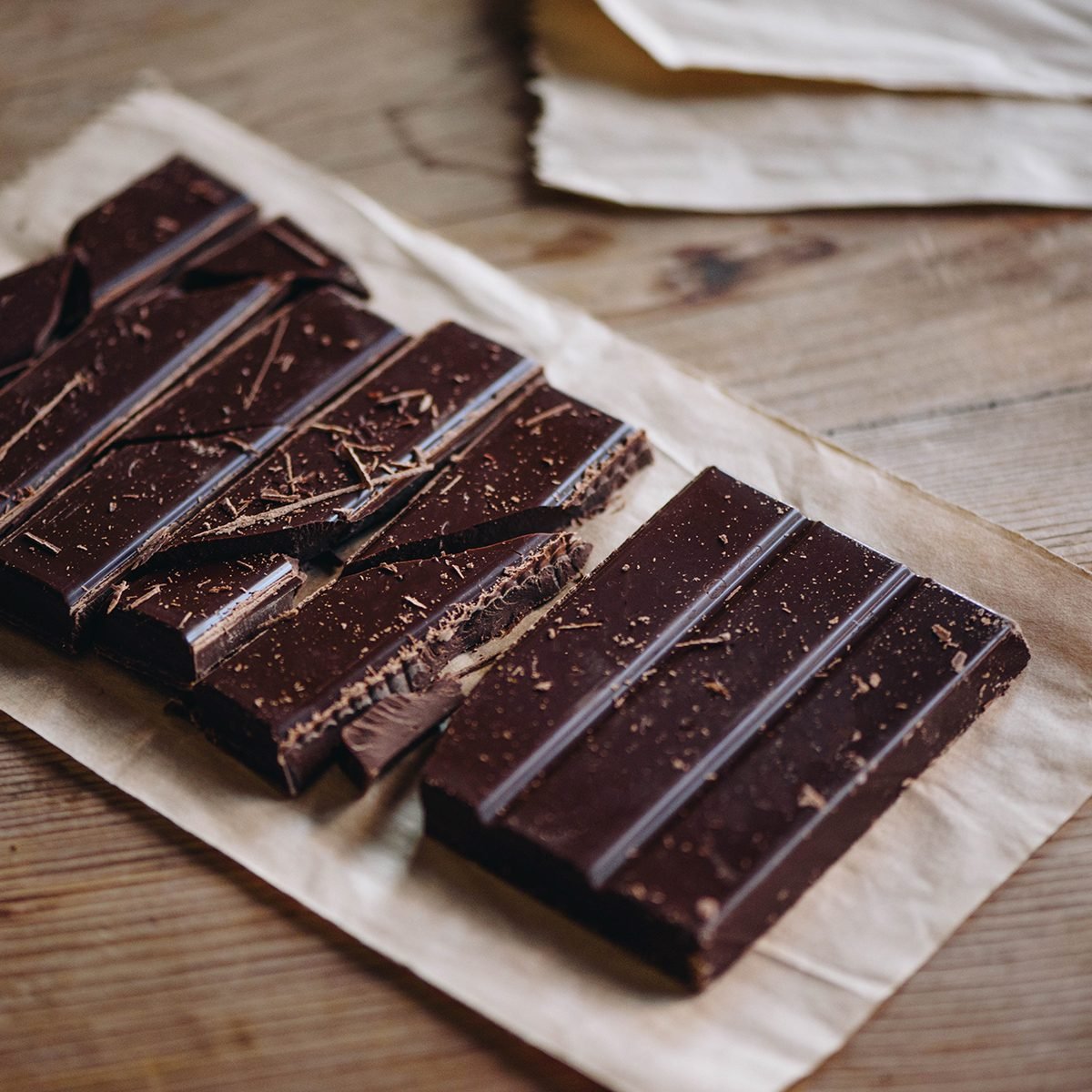Who doesn’t love a decadent chocolate dessert? Whether you prefer a flourless chocolate cake, the perfect truffle or super fudgy brownie cocoa is the main ingredient. But what baking chocolate do you reach for? A bar? Chocolate chips? What about that tin of cocoa powder in the cupboard?
Well, the answer might just be all three, but it’s worth learning the differences between these varieties so you can bake up some of your best chocolate recipes.
Solid Baking Chocolate

Many recipes call for a bar or squares of baking chocolate. These bars are usually melted down and added to a batter, like with this bittersweet chocolate cheesecake or chocolate chess pie. Not all these baking bars are the same, though. Here’s what the differences are between the major players.
Unsweetened Chocolate
Also known as baking or bitter chocolate, this is chocolate in its simplest form. It’s as bitter as chocolate can get since no sugars or flavorings are added. Definitely not for eating out of hand, this type is intended as an ingredient in rich brownies, cakes and cookies.
Bittersweet Chocolate
Here is where things can get a little confusing. While the FDA mandates bittersweet and semisweet chocolate contains at least 35% pure chocolate (cacao), it doesn’t specify what that percentage must be. In general, the higher the percentage, the less sweet the chocolate. It seems counterintuitive, but since chocolate in its natural form isn’t sweet, this actually makes perfect sense. Chocolate labeled 60 or 72% cocoa is often referred to as bittersweet. It’s great for eating by itself or baked into some delicious chocolate recipes.
Semisweet Chocolate
Semisweet chocolates generally range from 35 to 55% cocoa. Most chocolate chips are semisweet unless labeled otherwise. The semisweet flavor tends to be sweeter and less intense than bittersweet, so it’s is great for things like chocolate chip cookies, where the chocolate isn’t intended to be the dominant flavor. Here are some other semisweet chocolate recipes to inspire you to use up the rest of that baking bar.
Milk Chocolate
Mild in flavor and the sweetest of the true chocolates, milk chocolate contains at least 10% cocoa, and usually contains a lot of cocoa butter and sugar, too. Classic mainstream chocolate bars are made with this type. It’s also used in candy making and in plenty of sweet recipes.
White Chocolate
In the chocolate world, white chocolate has probably caused the most controversy. To be true chocolate, the FDA says it must contain at least
Cocoa Powder

Another way to add chocolate to a recipe is with cocoa powder. This powder is dried pulverized cocoa solids. It’s not particularly sweet, but it brings the chocolate flavor.
Natural Unsweetened Cocoa Powder
Press most of the cocoa butter out of unsweetened chocolate, and you’ll end up with bitter-tasting (but wonderful) natural unsweetened cocoa powder. The most widely available, it’s the secret weapon when you want a deep, rich chocolate flavor for baked goods like Devil’s Food Cake. While you can use a little bit to sprinkle on truffles, this type of cocoa powder is almost always intended to be used in a recipe, not eaten alone by the spoonful. (Come on, we’ve all tried it.)
Dutch Processed Cocoa Powder
Dutch-processed (aka alkalized) cocoa powder has been treated to reduce its acidity, giving it a smooth flavor and a reddish color. You can use Dutch-processed cocoa powder or natural cocoa powder interchangeably in candy and sauce recipes. However, when it comes to baked goods, stick to what the recipe calls for, since the type of powder can affect how the dough or batter rises.
Chocolate Bars vs. Chocolate Chips

With the exception of unsweetened chocolate, all of the solid chocolates are available in both bar and chip form. While the names may be the same, there are slight differences. To help keep their shape, chips have less cocoa butter and contain added stabilizers. While you may not notice a big difference between the two in the texture of a brownie, in sauces and candy making it can greatly alter the recipe. Baking chocolate bars are created to melt quickly and smoothly, so if a recipe calls for baking chocolate, it’s best to use the bar form.
If you’re a chocoholic, don’t be afraid to experiment a bit with cocoa in your baking. Try new brands, new types of baking chips and chocolates from around the world. You might just find a way to improve upon your go-to recipes.
The post Breaking Down Baking Chocolate: Find Out Which Type to Use appeared first on Taste of Home.
source https://www.tasteofhome.com/article/are-you-using-the-right-types-of-chocolate-for-baking/

0 Response to "Breaking Down Baking Chocolate: Find Out Which Type to Use"
Post a Comment